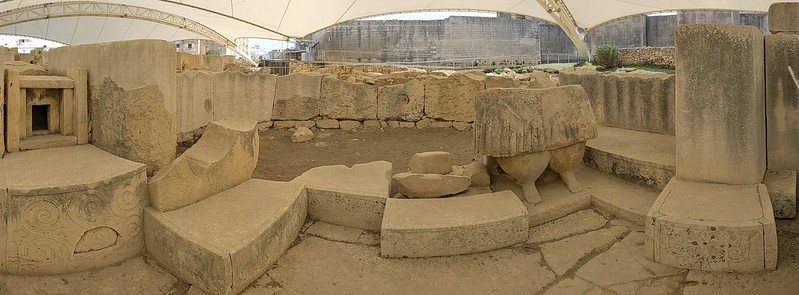A model of the Hagar Qim Megalithic Temple complex dating from 4000 BC. It is located on a high point by the sea.

The site is now covered by a tent. It is partially reconstructed; that is, some of the megaliths that had fallen have been raised back to the vertical.



One of the semicircular apses.

Looking at the Mnajdra Megalithic Temple complex from Hagar Qim. It is just 600 meters away, also by the sea. Both temples are exactly aligned with the Equinox sunrise.




Some of the stones have been "decorated" with dimples.

This configuration appears to be a shrine.

We also visited the Tarxien Temples (3150 BC).


There was some conservation/repair work going on. It is now known that partially covering the megaliths with concrete in order to preserve them has the opposite effect.

The Tarxien Temples had many more features and recovered artifacts than the other 2 temples.


This area resembles a church altar from modern times, no?

This statue may be related to fertility rites.


The National Museum of Archaeology in Valletta displays many artifacts and architectural elements from Tarxien. This stone has goats, a pig, and a sheep in relief.

And this altar.

More fertility figures.



The exhibits at this museum were very cool. Many showed the artifact with the archaelogist's field notes and photos displayed behind.




2 comments:
I went there in Feb 2016. I was surprised to find the tent but think it makes sense given the fragility.
I didn't realize the tent is that recent. They also have all kinds of intrumentation monitoring the environment.
Post a Comment